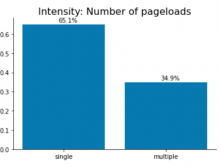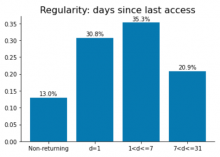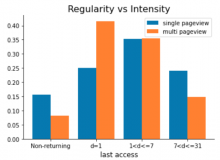This task involves the work of doing an initial analysis to learn whether the frequency with which people visit Wikipedia serves as a meaningful distinction between various groups of readers.
Research Questions
- 1. Of the people who visit a single Wikipedia page within a given day, what percentage of them:
- Did not visit Wikipedia before
- Visited Wikipedia within in the last month
- Visited Wikipedia within in the last week
- Visited Wikipedia yesterday
- 2. Of the people who visited multiple Wikipedia pages within a given day, what percentage of them:
- Did not visit Wikipedia before
- Visited Wikipedia within in the last month
- Visited Wikipedia within in the last week
- Visited Wikipedia yesterday
- 3. How – if at all – are the distributions questions "1." + "2." will have produced impacted when we limit visits that include clicks visits to any non-main namespace page/content?
Decisions To Be Made
Knowing the answer to the Research Questions above will help the Core Experiences Product Group form a more accurate "mental model" for the quantitative characteristics that define and distinguish the various groups of Wikipedia readers we hypothesize there to be.
Assumption(s) to Be Investigated
The "Research Question" described above serves as an effort to understand the extent to which the following assumption holds true: The frequency with which people visit Wikipedia is an effective way/dimension to identify various groups of readers.
Background
This investigation emerged from within the Journey Transitions Design Research Project which seeks to:
- Elucidate the key experiences that can cause people to deepen and expand their use of, and contributions to, Wikipedia
- Identify the phases people travel through along their journeys to deepening and expanding their use of, and contributions to, Wikipedia
Done
- Answers to all "Research Question(s)" are documented






